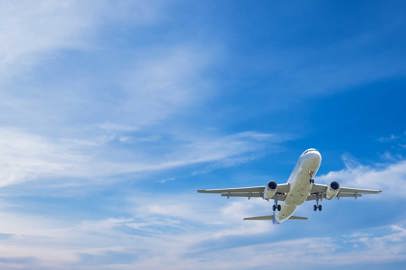17 May 2022
Changi Aviation Summit
The International Air Transport Association (IATA) has urged Asia-Pacific states to further ease border measures to accelerate the region’s recovery from Covid-19
“Asia-Pacific is playing catch-up on restarting travel after COVID-19, but there is growing momentum with governments lifting many travel restrictions. The demand for people to travel is clear. As soon as measures are relaxed there is an immediate positive reaction from travelers. So it is critical that all stakeholders, including governments are well-prepared for the restart. We cannot delay. Jobs are at stake and people want to travel,” said Willie Walsh, IATA’s Director General, in his keynote address at the Changi Aviation Summit.
The Asia-Pacific region’s international passenger demand for March reached 17% of pre-COVID levels, after having hovered at below 10% for most of the last two years. “This is far below the global trend where markets have recovered to 60% of pre-crisis levels. The lag is because of government restrictions. The sooner they are lifted, the sooner we will see a recovery in the region’s travel and tourism sector, and all the economic benefits that will bring,” said Walsh.
Walsh urged Asia-Pacific governments to continue easing measures and bring normalcy to air travel by:
• Removing all restrictions for vaccinated travelers
• Removing quarantine and COVID-19 testing for unvaccinated travelers where there are high levels of population immunity, which is the case in most parts of Asia
• Lift the mask mandate for air travel when it is no longer required in other indoor environments and public transport.
• Removing quarantine and COVID-19 testing for unvaccinated travelers where there are high levels of population immunity, which is the case in most parts of Asia
• Lift the mask mandate for air travel when it is no longer required in other indoor environments and public transport.
“Supporting and more importantly accelerating the recovery will need a whole of industry and government approach. Airlines are bringing back the flights. Airports need to be able to handle the demand. And governments need to be able to process security clearances and other documentation for key personnel efficiently,” said Walsh.
China and Japan
Walsh noted that there are two big gaps in the Asia-Pacific recovery story: China and Japan.
“So long as the Chinese government continues to maintain their zero-COVID approach, it is hard to see the country’s borders reopening. This will hold back the region’s full recovery. While Japan has taken steps to allow travel, there is no clear plan for the reopening of Japan for all inbound visitors or tourists. More needs to be done to further ease travel restrictions, starting with lifting quarantine for all vaccinated travelers, and removing both the on-arrival airport testing and daily arrival cap. I urge the government of Japan to take bolder steps towards recovery and opening of the country’s borders,” said Walsh.
“So long as the Chinese government continues to maintain their zero-COVID approach, it is hard to see the country’s borders reopening. This will hold back the region’s full recovery. While Japan has taken steps to allow travel, there is no clear plan for the reopening of Japan for all inbound visitors or tourists. More needs to be done to further ease travel restrictions, starting with lifting quarantine for all vaccinated travelers, and removing both the on-arrival airport testing and daily arrival cap. I urge the government of Japan to take bolder steps towards recovery and opening of the country’s borders,” said Walsh.
Sustainability in aviation
“Airlines have committed to achieve net-zero carbon emissions by 2050. A key to our success will be governments sharing the same vision. There are high expectations for governments to agree a long-term goal at the ICAO Assembly later this year. Achieving net zero requires everyone to shoulder their responsibility. And among the most important things that governments should do is incentivizing the production of sustainable aviation fuels (SAF). Airlines have bought every drop of SAF that is available. Projects are underway that will see a rapid increase in SAF production over the next years. We see SAF contributing to 65% of the mitigation needed to achieve net zero in 2050. That will require governments to be much more proactive,” said Walsh.
Walsh acknowledged that there have been positive developments in Asia-Pacific. Japan has committed considerable funds for green aviation initiatives. New Zealand and Singapore have agreed to cooperate on green flights. “Singapore’s cross industry International Advisory Panel on a sustainable aviation air hub is a positive example for other states to adopt,” said Walsh. He also called on ASEAN and its partners to do more, particularly looking for opportunities in the region to expand SAF production.
Edited by editorial staff
Avion Tourism Magazine
Text source: © IATA Corporate Communications
Visual: Copyright © Sisterscom.com / Depositphotos
Singapore Photo: Copyright © Sisterscom.com / Shutterstock
You might be interested in
Useful Info

Authority
Olbia Airport will be named after Prince Karim Aga Khan IV
ENAC pays tribute to the founder of modern tourism in Costa Smeralda: a key figure in the history of aviation and the development of Sardinia
Useful Info

Authority
Airport Day
The national event, organized by Assaeroporti, is held on February 5 to celebrate the strategic role of the 17 participating Italian airports
Useful Info

Authority
ENAC: reorganization and future challenges of air transport
At the 2025 Meeting, a discussion on innovation, sustainability, innovative air mobility and quality of services, in line with the country's strategic objectives



